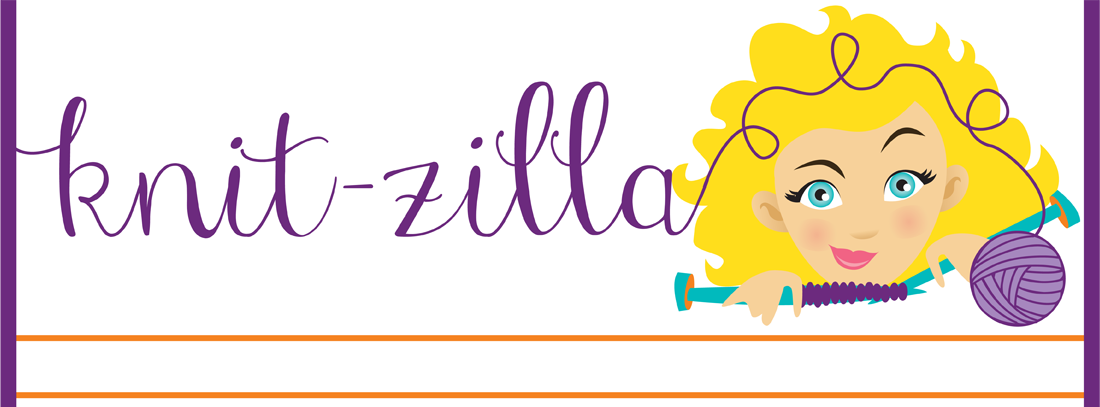Although I have vastly improved the buttonbands and neckband on this cardigan I knit in 2016, I haven't really mastered the "selfy". My intent was to show you how this sweater looks on ME. The new buttonbands don't stretch out, causing the front of the cardigan to hang funny. It used to be difficult to wear, because I was forever trying to get it to hang properly on my body. Now I love wearing it! This makes the time and expense well worth it.
The finishing skill employed here, was using a much small needle for the bands, than called for in the pattern. This cardigan was knit on US6 needles, and the buttonband is knit on US2 needles. This creates a more stable fabric for making stable buttonholes and attaching buttons. You'll note that I used a sewn bindoff on the button side. This is a stretchy bindoff that lays really flat. To learn this technique, go to: https://www.youtube.com/watch?v=u-Fy4GkpjPg. The rolled edge employed a standard bindoff.
I like the new button choice too, and the buttonholes match them perfectly, without any strange holes or pulling when they are buttoned. In addition, using the small, clear buttons on the back, makes the buttons much more secure, and keeps them from drooping when the cardigan is buttoned. To learn this fabulous, one row buttonhole, go to: multi-stitch buttonhole.
My "Mousy Tail Clone", copied from Jankee, is nearing completion. You can see the body shaping I've used on this sweater to assure it will fit me perfectly. I used a Custom Fit Pattern in getting all the numbers necessary and shaping instructions to get this custom fit, just for me.
Can you see the side seams? The only thing that gives it away, is the curve that adapts to the curves of my body. I didn't used to think that using the "Mattress Stitch" was necessary to create a great seam. I was wrong! Now that I take the time to seam with the "Mattress Stitch, my seams lie flat and they don't pull apart. To learn the "mattress stitch" technique, go to: Seaming with the Mattress Stitch.
Lastly, I thought I would talk a little about my blocking technique. I always soak my sweater pieces in cool water, roll them in a fluffy towel taking care not to stretch the pieces, and squeeze out as much excess water as possible. DO NOT TWIST KNIT PIECES. Then lay the pieces out flat on a blocking board and carefully manipulate the pieces to the measurements on your pattern schematic. Pin where necessary to hold in-place until the pieces dry. Do not stretch and pin any ribbing, as you'll want this stretch to spring back with each wearing. I love these Blocking Combs, they prevent points in your knitting. You may not be able to tell from this photo, but I have stacked two sleeves here, to dry together. This assures both sleeves will be the same exact size when they dry. I do the same with the back and front pieces. My arms may not match exactly, but my sleeves always will. You have to use optical illusion whenever possible, haha.
I'll have pictures of this finished sweater in my next blog post. I'm currently working on the buttonband and adding the buttons, as discussed previously.
I'm busy planning my next sweater projects. Here they are:
First, I'll be knitting "Sprossling" by Anne Hanson. I'll be knitting with Wollemeise Twin. It is a great yarn of 20% nylon and 80% wool in a fingering weight. I'm planning this as a summer sweater to wear over summer sundresses and tank tops.
Second, I'll be knitting "Cabled Cardi" by Norah Gaughan. I'll be knitting with Wollemeise DK. I just love this yarn and can't seem to move on from it.
You can see that I have my swatches all knit up and ready for generating my Custom Fit Patterns for each. I'll be knitting Sprossling as written, but Cabled Cardi will have long sleeves and a slightly longer a-line fit. I'm hoping these changes will be more flattering to my shape.
I hope these little tips and tricks, that I've learned recently, will help you too. Being open to change is the best possible way to improve. Thank you to those knitters who have gone before me, and figured out the best possible methods for knitting perfectly beautiful sweaters. If you are a member of Knit Night Group, take a good look at these techniques and let me know if I can help you with future projects. To the rest of you . . . . . . . Happy Knitting.



















No comments:
Post a Comment